Building Successful AI-Enabled Technology Teams - A Strategic Framework for the Modern Enterprise
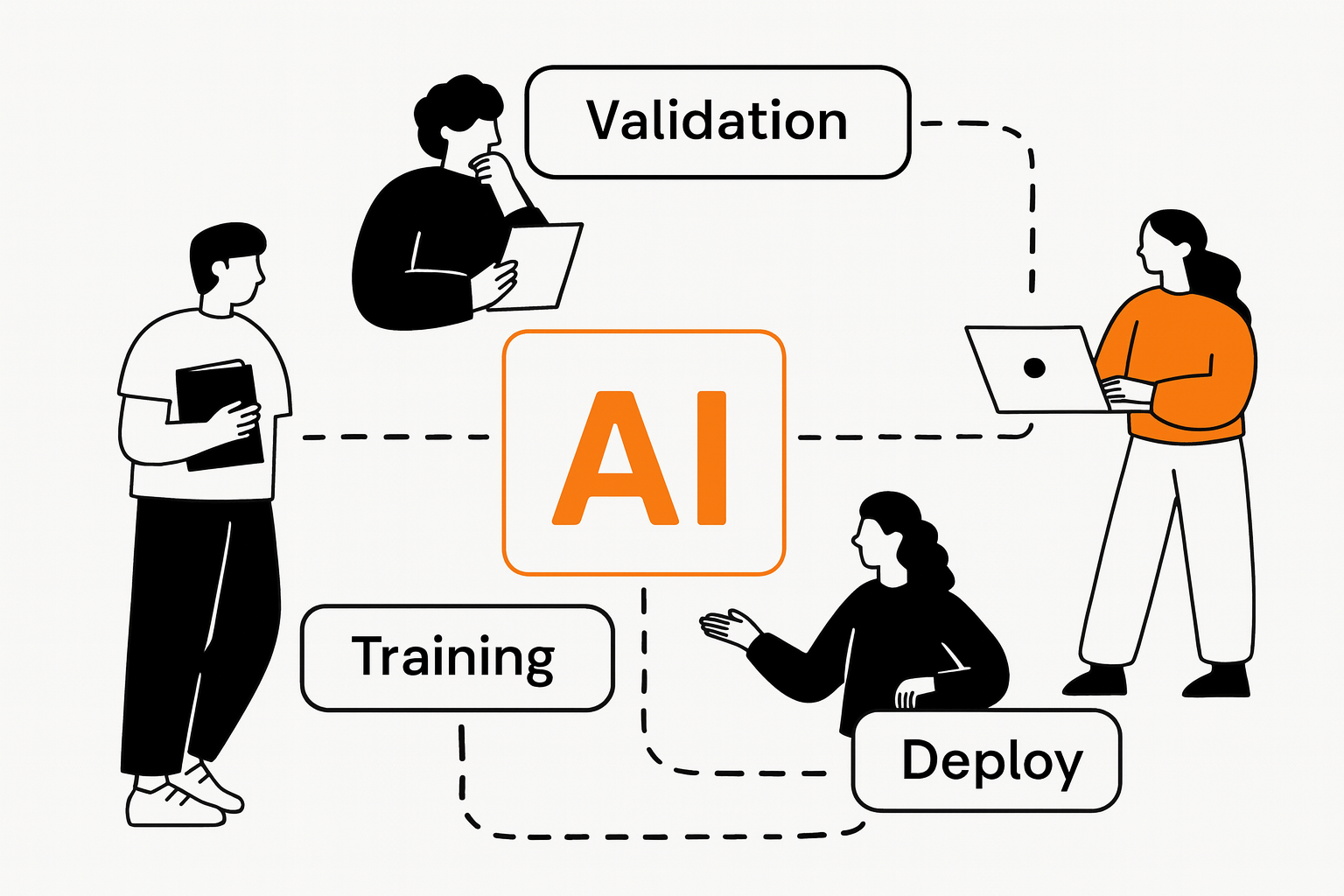
Enterprise AI spending hit $13.8 billion in 2024, up from $2.3 billion the year before, with 92% of companies plan to increase AI investments. But here's the problem: companies are throwing money at AI and getting almost nothing back. 42% of companies killed most of their AI initiatives in 2025, double the failure rate from the previous year.

The pattern is clear: adoption is happening fast, but scaling is where enterprises stumble. Fortune reports that only 25% of AI initiatives deliver the ROI leaders expect. For companies caught in this gap, the cost is much more than wasted investment, it’s falling behind competitors who are already integrating AI into products, workflows, and customer experiences through AI-enabled software development.
What emerges is a new leadership challenge: not whether to adopt AI, but how to build the right teams, frameworks, and processes so AI-enabled efforts can move past experiments and deliver lasting business value. The answer lies in strategic AI talent management and building effective teams of AI developers.
For a deeper dive into how the industry is shifting, see our analysis on the AI-Driven Evolution of Software Development.
The Current State - The AI Implementation Challenge
Traditional Enterprises Are Stuck Between Two Worlds
Picture this: A Fortune 500 company running critical operations on systems built in the 90s while their competitors launch AI-powered features weekly. That's the reality for most traditional enterprises right now.
They're trying to modernize legacy systems (that somehow still work) while the entire tech landscape shifts beneath their feet. And here's the kicker: Most don't have anyone internally who really understands what's worth adopting and what's just hype. They lack AI developers with real implementation experience. So they end up either moving too slow or breaking things that weren't broken.
According to MIT’s 2025 research, this is exactly why 95% of enterprise AI pilots fail to deliver measurable ROI. Enterprises lead the pack in pilot volume, but fewer than 5% of custom initiatives ever reach full deployment, largely because outdated workflows and rigid systems can’t adapt to the pace of AI in software engineering. Success requires AI-enabled software development practices and the right AI development team.
Software Companies Can't Hire Fast Enough
Even the "tech-native" companies are hitting walls. Teams that crushed it last year suddenly can't keep up. Not because they got worse, but because the game changed.
The gap between what developers know and what they need to know keeps widening. By the time a team gets comfortable with one framework or approach, three new "must-have" technologies appear. Scaling isn't just about adding bodies anymore. It's about finding people who can learn faster than the tech evolves - true artificial intelligence engineers who understand both traditional development and AI-enabled approaches.
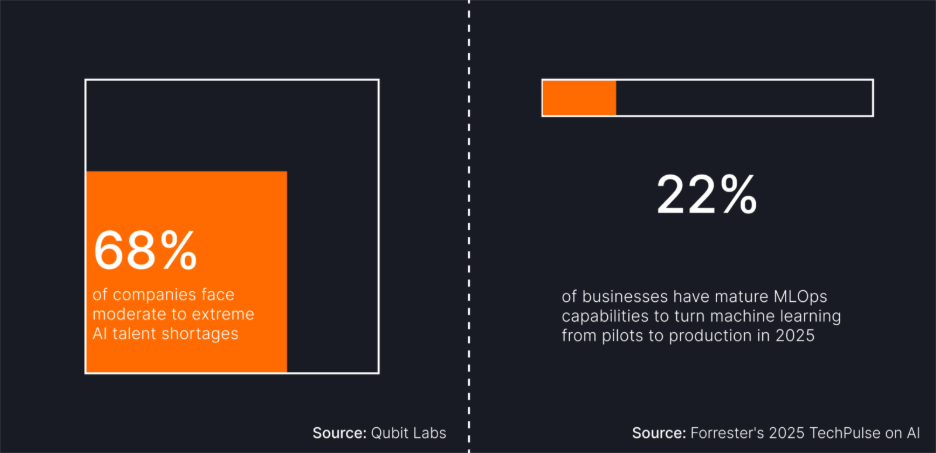
Leadership Is Caught in the Middle
The same scenario plays out in tech companies everywhere: Boards want AI integrated into everything. Yesterday. Development teams are already stretched thin. And the gap between expectations and reality keeps growing wider.
The numbers tell the story: Over 80% of organizations are experimenting with AI tools like ChatGPT or Copilot. But only 20% of enterprise-grade pilots make it past testing. It's not that companies lack ambition. The real problem is that these tools don't play nice with existing processes.
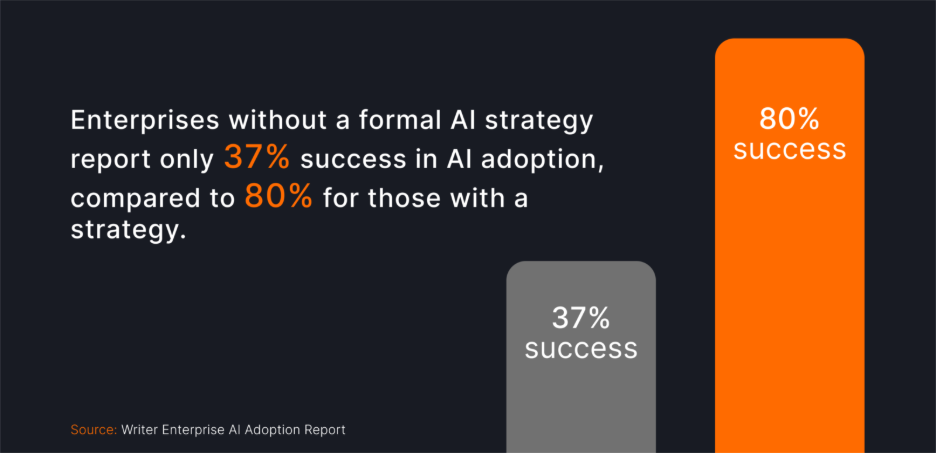
So leadership gets stuck in the worst possible position: massive pressure from above to deliver AI transformation, teams below that can't absorb another major change, and a graveyard of half-finished pilots that proved the tech works but can't scale.
There's no clear playbook for bridging this divide without either burning out the team or burning through the budget. It's the classic tech leadership dilemma, just with higher stakes and less room for error.
The Hybrid Team Puzzle Nobody's Solved
Companies everywhere are cobbling together teams from whoever they can find. Some onshore, some offshore. Some full-time, some contractors. Some in-office, some haven't worn real pants since 2020.
But here's what nobody talks about: Making these mixed teams actually work together is hard. Especially when half the team is using AI tools and the other half is still debating whether to trust them. Building effective AI development teams in this hybrid environment requires new approaches to collaboration and AI engineering talent integration.
For guidance, explore our insights on hybrid teams creation.
AI Impacts Every Department
Engineering was just the appetizer. Now every department wants in on the AI revolution. Marketing teams are pushing for AI that writes compelling copy and predicts campaign performance. Sales wants intelligent lead scoring and automated outreach that actually converts. Customer support dreams of chatbots that can hold real conversations, not just follow scripts.
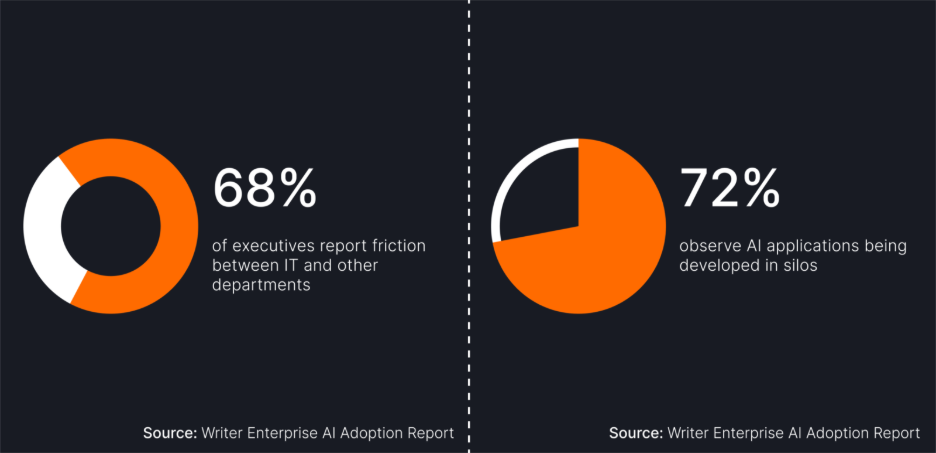
The opportunity is massive, and everyone sees it. But here's where things get messy: most companies lack the expertise to make these disparate AI systems work together. Even worse, they often have different teams building isolated solutions in their own silos, creating an expensive collection of AI experiments that never quite connect or scale.
What starts as exciting innovation quickly becomes a graveyard of half-implemented tools and unfulfilled promises. Without someone who understands both the technology and the bigger picture of system integration, companies end up with impressive demos that never translate into real business value. This is where strategic AI talent management and building the right AI-enabled infrastructure becomes critical.
The AI Revolution - Everything We Knew About Building Teams Has Changed
The Junior Developer Problem
Here's an uncomfortable truth: The traditional developer career path is dead. AI tools now write the basic code that junior developers used to cut their teeth on. Those simple CRUD operations, basic debugging tasks, and routine features that taught new grads how to think like engineers? ChatGPT and Copilot handle them in seconds.
This creates a weird paradox. Companies still need senior AI developers who understand system architecture, can debug complex problems, and know when the AI is suggesting garbage. But how does anyone become senior without going through junior first? It's like expecting someone to run marathons when they never learned to walk.
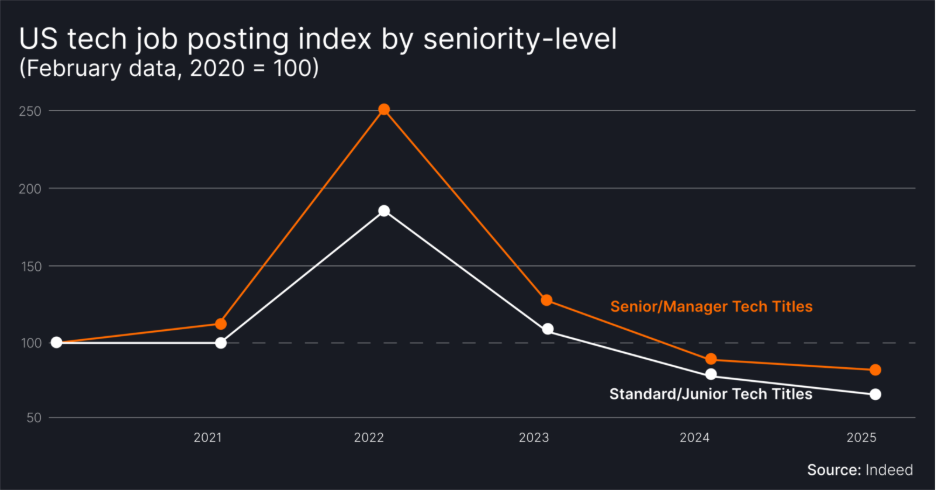
The whole economics of entry-level hiring just stopped making sense. Why pay a junior developer $80K when AI tools that cost $20/month can handle most of their tasks? But if companies stop hiring juniors, where do tomorrow's seniors come from? Nobody has a good answer yet.
The Skills That Actually Matter Now
The entire job description for developers got rewritten overnight. Knowing how to code isn't enough anymore. Modern developers need to be part programmer, part AI whisperer, and part systems architect.
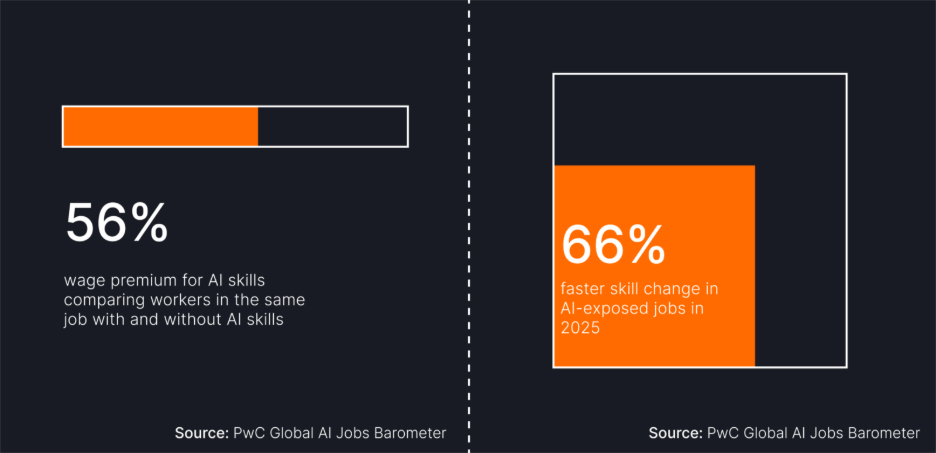
They need to know when to let AI write code and when to take over. They need to understand how to build AI features into products without creating a maintenance nightmare. They need to manage workflows where some code is human-written, some is AI-generated, and somehow it all needs to work together. This is what AI in software development really looks like in practice - a blend of coding, orchestration, and strategic oversight.
And it's not just about technical skills. Artificial intelligence engineers now need to understand how AI impacts the entire business. Because when marketing asks for an AI chatbot or sales wants predictive analytics, developers can't just say "not my department" anymore.
The Race to the Bottom in Talent
When companies can't find the right people (and most can't), they start making compromises. And those compromises are painful to watch.
Some settle for developers who sort of understand AI but can't actually build anything production-ready. Others hire contracting firms that promise AI expertise but deliver junior developers with a ChatGPT subscription. The really desperate ones go for the cheapest offshore option and hope for the best.
These band-aid solutions always backfire. Projects drag on for months. Code quality tanks. Technical debt piles up. And eventually, companies spend more fixing the mess than they would have spent hiring the right AI development team from the start.
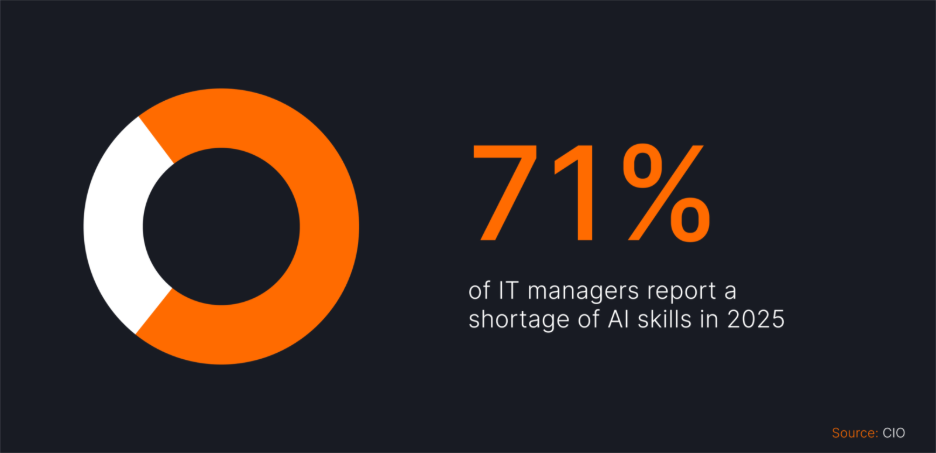
The talent shortage is real, but solving it with warm bodies who can't deliver just makes everything worse. Companies need AI developers who can actually build AI-integrated systems that scale, not just people who can spell "machine learning" on their resume.
Why Most Playbooks Fail
Companies don’t struggle because they lack ambition. They struggle because they try to force AI into structures built for a different era. Legacy staffing models assume you can just hire more developers when demand spikes. Traditional SDLC methods assume code is human-written end to end. Even the consulting playbooks focus more on slide decks than shipped products.
That’s why billions in enterprise AI spending end up in pilot graveyards. The frameworks weren't designed for hybrid teams, AI-enabled development, or multi-department integration. The rules changed, but the playbooks didn’t.
To actually make AI scale, companies need a new approach, one that matches today’s realities of AI talent management, tools, and organizational complexity.
A Strategic Framework That Actually Works
The Genius Match Approach - Building AI-Enabled Teams for the New Era
Building successful AI-enabled technology teams requires a fundamentally different approach than traditional staffing models. Organizations need a strategic framework that addresses:
- Optimal Team Composition: Creating the right blend of full-time employees, onshore resources, and offshore talent
- AI-Ready Talent: Professionals who arrive with proven AI tool proficiency and implementation experience
- Proven Methodologies: Tested best practices for hybrid team collaboration and AI integration
- Cross-functional AI Implementation: Strategies for embedding AI across business operations beyond engineering
Core Components of Effective AI-Enabled Teams
AI-Proficient Senior Talent
The AI developers who thrive in this new world understand when AI adds value and when to code from scratch. They've actually shipped products with AI components. They know the difference between a cool demo and something that works at scale.
These artificial intelligence engineers can spot when team members are using AI tools wrong. They understand how to integrate AI-generated code without creating a maintenance nightmare. And critically, they can teach others how to work effectively in this hybrid human-AI development world.
Strategic Team Composition
The most successful companies have figured out that team composition matters more than team size. They keep strategic employees in-house for long-term vision, core architecture decisions, and institutional knowledge that can't be documented.
They use onshore resources for work that requires constant collaboration, client interactions, and complex problem-solving sessions where timezone alignment matters. They leverage offshore talent for scaled execution, specialized skills, and round-the-clock development cycles.
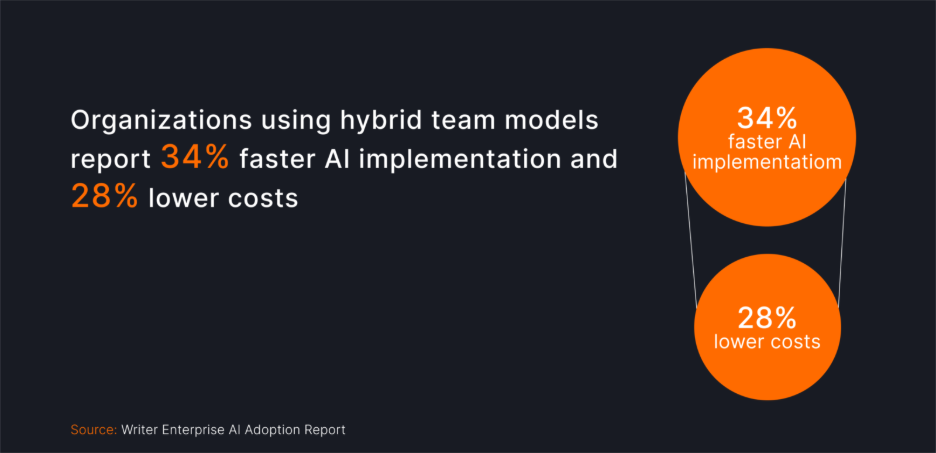
Across all these groups, they need people who actually understand AI tools in practice. People who've been using these tools long enough to know their limitations. This is where effective AI talent management becomes essential.
For deeper insights, see our framework on building an AI teams.
Best Practices for Hybrid Teams
Getting diverse teams to work together was hard enough before AI. Now companies need workflows that account for developers using AI-assisted coding, others reviewing AI-generated code, and everyone maintaining quality standards. This includes:
- Evolved SDLC processes with built-in AI tooling and quality gates
- Communication protocols that account for AI-enabled software development workflows
- Knowledge transfer mechanisms that work across geographic and cultural boundaries
- Performance measurement systems adapted for AI-enhanced productivity
Smart companies build new frameworks that assume AI assistance from the start.
Comprehensive AI Integration Strategy
Beyond Engineering: Enterprise-Wide AI Implementation
Successful AI adoption extends far beyond engineering departments. Organizations must develop comprehensive strategies for:
- Marketing Operations: AI-powered content creation, customer segmentation, and campaign optimization
- Sales Processes: Intelligent lead scoring, automated follow-up systems, and predictive analytics
- Revenue Operations: Advanced forecasting, pricing optimization, and customer lifecycle management
- Customer Support: Intelligent ticket routing, automated response systems, and sentiment analysis
- Business Intelligence: Accessible analytics, automated reporting, and predictive insights
The companies winning at AI think about it holistically. They build systems that share data and insights across departments, requiring AI engineering talent that understands both technical implementation and business integration. They create pipelines that feed customer support insights into product development, ensuring their AI-powered sales predictions actually inform inventory and operations.
System Integration and Data Connectivity
The hardest part of enterprise AI is making all your systems talk to each other. Most companies have data scattered across dozens of platforms, in different formats, with different access controls.
Before AI can deliver value, companies need to build the infrastructure. Clean data pipelines. Consistent formats. Security frameworks that protect data while letting teams move fast. Governance structures that satisfy compliance without blocking innovation.
This foundational work determines whether AI initiatives deliver real results or just generate impressive presentations. The companies that get this right are the ones whose AI investments actually pay off, powered by strong AI talent management and properly structured AI-enabled systems.
The Genius Match Implementation Framework
Most companies approach AI implementation like they're throwing spaghetti at a wall. They try a tool here, run a pilot there, hope something sticks. After burning through budget and patience, they end up with a mess of half-baked initiatives and nothing to show for it.
The companies that succeed treat AI implementation like following a recipe. They know exactly what ingredients they need, in what order, and how to adjust when things don't go as planned. That's the difference between random experiments and proven methodologies in AI-enabled software development.
Assessment and Strategy Development
Before touching any AI tools, successful companies take a hard look at reality:
- What can their current teams actually handle?
- Where are the technical gaps that will derail implementation?
- Which AI opportunities will deliver real value versus just looking good in a quarterly report?
This assessment phase reveals the difference between what companies think they need and what will actually work. It identifies which teams are ready to integrate AI today and which need foundational work first. And critically, it creates a roadmap that aligns with business objectives, not just technical possibilities.
Build the Right Team Structure
Once companies know where they're going, they need the right people to get there. This means analyzing current team composition and identifying where changes will have the most impact. Some teams need more senior AI-enabled developers. Others need better collaboration between onshore and offshore resources. Many need both.
The key is mapping existing skills against AI requirements and filling gaps strategically. Companies need frameworks for how hybrid teams will actually work together, not just org charts that look good on paper. They need communication protocols that account for AI-enabled development and different technical capabilities across locations.
Execute With AI-Ready Professionals
Implementation succeeds or fails based on who's actually doing the work. Companies need artificial intelligence engineers who've implemented AI in production before, not developers learning on the job. These professionals bring evolved SDLC processes that integrate AI from the start. They know how to deploy AI across departments, not just in engineering.
The best implementations connect AI initiatives across marketing, sales, operations, and support. They build the data pipelines and system integrations that make AI valuable at scale. And they do it with proven approaches, not theoretical frameworks. This requires an experienced AI development team that understands both technology and business.
Keep Evolving or Get Left Behind
AI implementation isn't a one-time project. The tools change monthly. Best practices evolve quarterly. Companies that succeed build continuous improvement into their DNA. They monitor which AI implementations deliver value and which are just expensive distractions. They assess new tools pragmatically, adopting what works and skipping the hype.
Most importantly, they invest in their teams' AI capabilities continuously. Because the companies that win aren't the ones with the best AI tools. They're the ones with AI engineering talent that knows how to use them effectively.
Measuring What Actually Matters
Technical Metrics That Drive Business Value
Successful companies track metrics that matter, not vanity numbers. Development velocity means nothing if code quality tanks. They measure story points delivered with AI assistance, but balance this against defect rates and technical debt accumulation.
- Development Velocity: Story points delivered per sprint with AI-assisted development
- Code Quality: Defect reduction rates and review cycle efficiency
- Time to Market: Feature delivery speed and release cycle optimization
- Technical Debt: Code maintainability scores and debt reduction trends
The companies getting real ROI from AI see faster release cycles without sacrificing stability. AI catches basic issues before human review, making the entire software development process more strategic. Technical debt decreases as AI helps enforce consistency across codebases, freeing developers to focus on architecture and innovation rather than cleanup.
Business Impact Beyond the Balance Sheet
Cost per feature matters, but leading organizations track deeper impacts. They measure how AI transforms product quality, accelerates technology adoption, and drives user satisfaction. They connect AI initiatives directly to revenue growth and competitive positioning.
- Cost Efficiency: Team optimization reducing cost per delivered feature
- Customer Satisfaction: Product quality improvements and user experience gains
- Market Competitiveness: Speed of adopting emerging technologies versus industry benchmarks
- Revenue Impact: Direct business value from AI-enhanced capabilities
The real winners achieve multiple wins simultaneously. Cost efficiency improves while market position strengthens. Products ship faster with higher quality. Customer satisfaction rises alongside profitability. This combination creates sustainable competitive advantage that compounds over time.
Team Effectiveness Metrics
The best metric for AI success measures how well teams adapt and grow. Companies track knowledge transfer from AI-proficient professionals to existing staff. They measure coordination effectiveness across distributed AI development teams. They monitor engagement levels as capabilities evolve.
- Knowledge Transfer: Upskilling rates for AI tools and methodologies
- Collaboration Efficiency: Cross-team coordination improvements
- Retention and Satisfaction: Team engagement and stability metrics
- Innovation Capacity: New technology experimentation frequency
Strong AI implementations transform team dynamics. Groups previously consumed by maintenance now drive innovation. Artificial intelligence engineers who spent weekends fixing bugs now prototype new features. This shift from reactive to proactive development predicts long-term success better than any technical metric.
The Bottom Line: Transform Now or Get Left Behind
The shift to AI-enabled teams is here. Companies that figure this out are already pulling ahead. Those still debating whether AI is "ready for prime time" are watching their competitors ship features twice as fast with half the resources.
This isn't about jumping on the latest tech trend. It's about fundamental business survival. The traditional ways of building and scaling teams stopped working the moment AI tools became production-ready. And there's no going back.
What This Actually Means for Companies
Traditional staffing approaches where companies just add more developers when things get busy? Dead. The math doesn't work anymore when one AI-proficient developer can output what used to take three people.
Hybrid teams mixing onshore, offshore, employees, and contractors? They're the only way to scale efficiently now. But making them work requires proven frameworks, not good intentions and Slack channels. Success depends on proper AI talent management and the right AI engineering talent.
AI touching every part of the business, not just engineering? That's table stakes. Marketing, sales, operations, support - they all need AI integration. Companies treating this as an "IT project" are missing 80% of the value.
And those "recipe cards" - the proven methodologies for making all this work? They're the difference between companies that successfully transform and those that waste millions on failed pilots.
Partner with Expertise
The complexity of building successful AI-enabled technology teams requires specialized expertise and proven methodologies. Organizations that attempt this transformation independently often encounter significant challenges and suboptimal outcomes.
Genius Match provides the strategic framework, proven methodologies, and skilled professionals necessary for successful transformation. We bring the "recipe cards" and experienced "chefs" to ensure your AI integration delivers measurable business results.

Genius Match Strengthens Leadership Team with Industry Veterans Helen Prashchur and Elizabeth Jenkins
Genius Match announced the appointment of two seasoned sales executives to drive North American expansion.
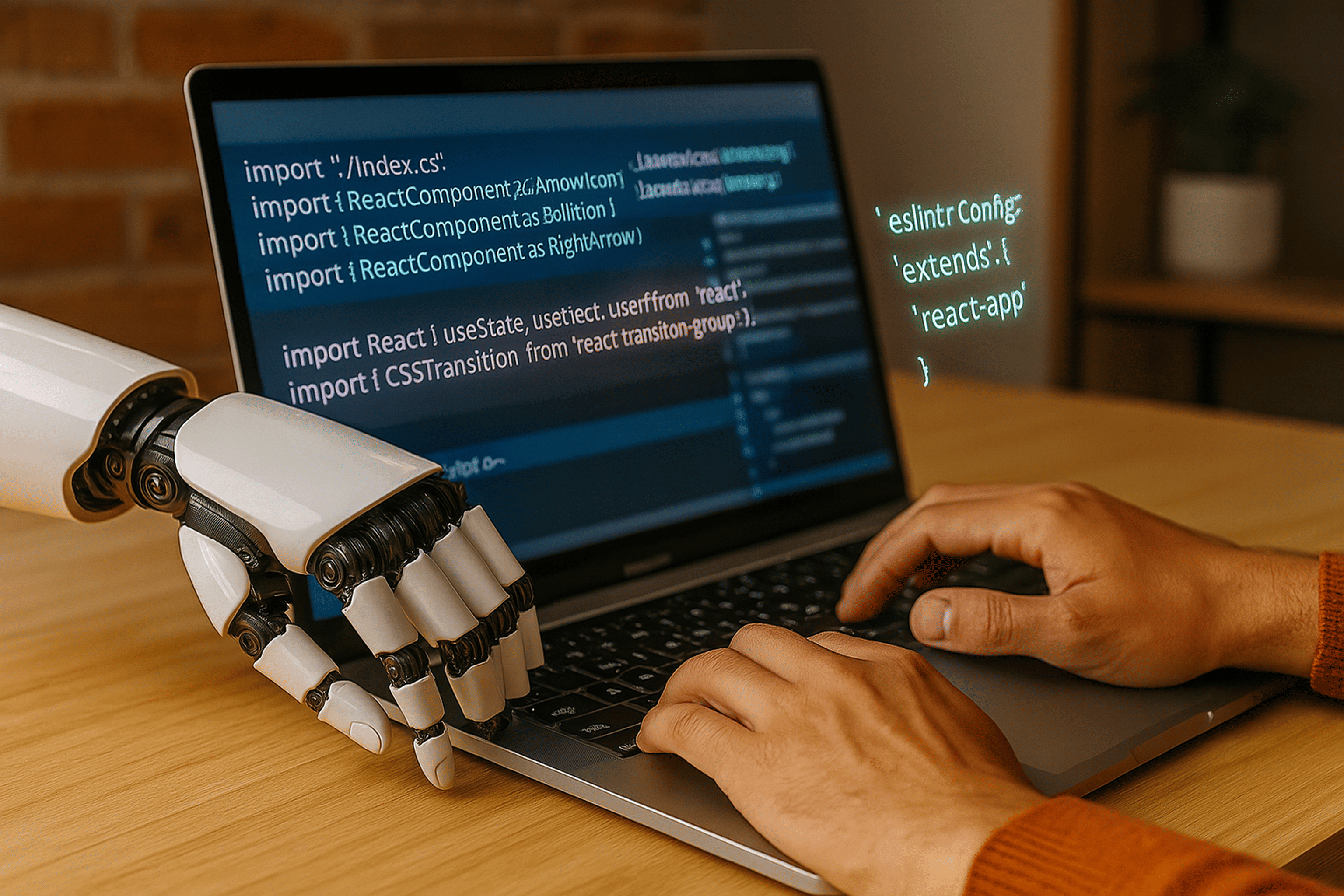
The AI-Driven Evolution of Software Development: Why Global Talent and Human Expertise Matter More Than Ever
The software development landscape has undergone a seismic shift. AI assistants now write code, automate complex tasks, and streamline development workflows in ways that seemed impossible just a few years ago. While this revolution has transformed how we build software, it has also created new challenges and misconceptions that are reshaping the entire industry.

Empowering EdTech Innovation with Tailored Talent Solutions
This case study showcases how Genius Match helped a leading EdTech company fast-track its digital transformation and product roadmap through tailored outstaffing solutions.